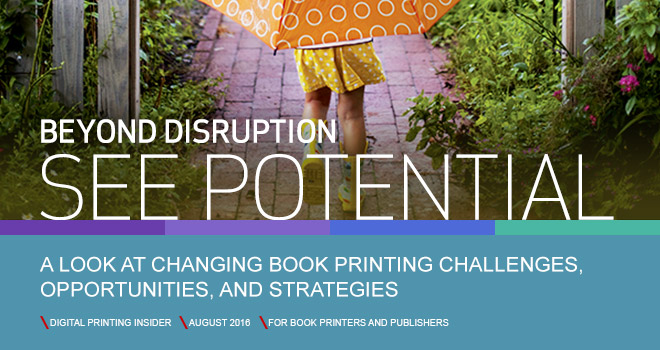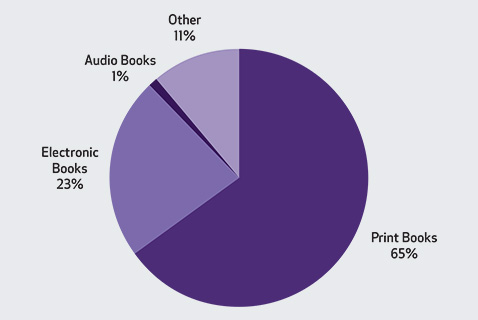Trends for 2016: The Future of Books
As technology has disrupted and transformed the book market, publishers are forced to rethink their strategies and technology investments. Technological innovations are changing business models that affect how publishing content is produced, distributed, and consumed. As both digital media and printing technologies continue to emerge and change, publishers, authors, and printers must adapt so they can benefit from new opportunities.
In the Canon Solutions America-sponsored webinar entitled Print Trends for 2016: The Future of Books in the New Year, presented by Printing Impressions and Book Business magazines, InfoTrends Group Director Barb Pellow said, “The digital era is changing the book publishing market on many fronts. Although publishers have historically looked to achieve low per-unit manufacturing costs by printing long runs, inkjet printing is disrupting the traditional warehousing and distribution model as publishers can affordably print books on demand.”
“The digital era is changing the book publishing market on many fronts... inkjet printing is disrupting the traditional warehousing and distribution model.”
Barb Pellow, InfoTrends
With today’s production digital printing methods, publishers can meet distribution channel requirements more effectively with shorter “just-in-time” runs. By printing books on an as-needed basis, publishers can warehouse books in a digital format while also solving warehousing and distribution issues. This effectively eliminates a long-standing challenge for publishers, the ability to accurately forecast demand for books and minimize the costs of overruns.
According to InfoTrends’ research, print is still a major revenue source for the book publishing market, accounting for 65% of all revenue. Furthermore, books represent one of the fastest-growing print applications for migration to digital. By 2019, 22.7 billion book pages are expected to be printed digitally.
A panel of industry leaders from various realms of the book market joins Pellow in this exciting webinar. These experts were asked to share their perspectives on the industry and the major trends that will drive its future development.
Kat Meyer, Director of Content Development and acquisition at the Book Industry Study Group, kicks off the panel of presenters with the latest statistics from BISG concerning industry standards and best practices. She shares insight on enhanced book discoverability, stating, “We really want to make sure that people can find the work that is being published.” Book discoverability enhancement also enables better sales tracking, a greater understanding of sales trends, and increased data collection throughout the supply chain. “This is key to helping buyers find the content,” Meyer notes. Publishers and trading partners are assisting with discoverability by enabling access to accurate data across the supply chain to provide better title information to libraries, retailers, and consumers. This data can incorporate anything that can assist with location, including the content of the book itself, marketing promotions, or awards the book has received. Meyer also discusses the user experience, content rights, and privacy issues during the webinar.
Next, Angela Bole, CEO and Executive Director of Independent Book Publishers Association, provides an update on how the growing independent publishing industry is impacting the book market. Highlighted in her comments were three independent book publishing trends to watch for, including the rise of digital book printing, the increase of hybrid publishing as a more prominent business model, and new ways to track indie book sales through alternative data collection efforts.
Books represent one of the fastest-growing print applications for migration to digital. By 2019, 22.7 billion book pages are expected to be printed digitally.
Lastly, Kent Larson, President of Book Manufacturers’ Institute and VP of Print on Demand at Bridgeport National Bindery, highlights positive news for the future of physical books. Publishers and book printers are facing many pressures from all ends of the manufacturing process, but according to Larson, “The book is not dead … low-tech still lives!” Larson also highlights Nielsen trends from the past few years and provides projections into the year. He shares insights on the book process, discusses changing business models, and explores how data affects production. Data drives the entire process, including content, order management, and tracking. In addition to enhanced data capabilities, the benefits of digital printing include increased speed-to-market, flexibility in volume, and increased quality due to emerging technologies.
This in-depth webinar explores the viability of digital printing in the book market, considers how technology is contributing to the future of books, and offers the latest insights on indie publishing. For publishers and book printers of all sizes, this webinar is a must-see!

